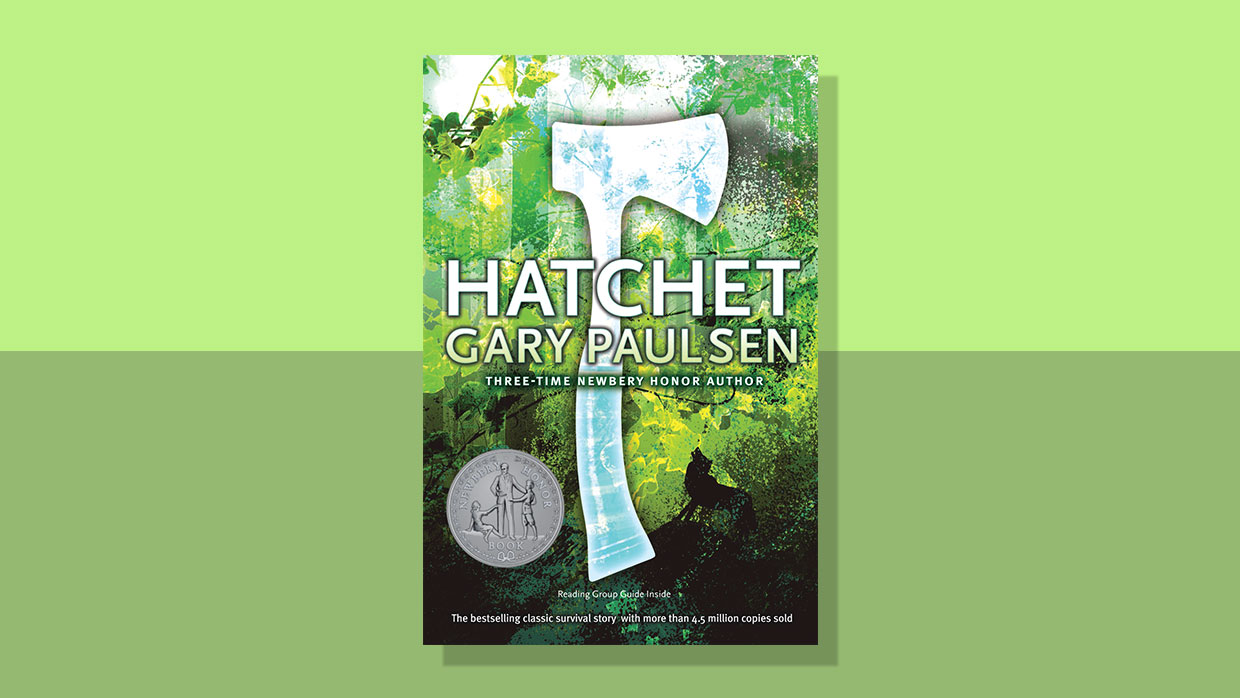Your students probably haven’t given much thought to what they would do if they had to crash-land an airplane into a lake in the Canadian wilderness. In Gary Paulsen’s award-winning novel Hatchet, young readers get about as close as one can to that experience, thanks to the author’s ability to transport his readers, through the power of language, to such a remote location under the worst of circumstances.
Hatchet is one of those books students often have trouble putting down. It’s a true page-turner, engaging students at the outset with an exciting sequence of events related to courage, bravery, and survival. It’s also a story your students may even look back upon when they’re forced to overcome obstacles they encounter in life, though hopefully those challenges are a little less dire.
As students read about the struggles and perils Brian, the book’s main character, must navigate and endure in order to survive, it’s important for teachers to engage readers with a variety of activities to ensure students are truly understanding what they’re reading. For teachers, it’s not so much that they have to teach the book, but instead, it’s about helping students fully develop the skills they need to comprehend the story’s main ideas and concepts—skills they’ll tap as they continue their reading journey. Here are a few activities and strategies to help students get the most out of the reading experience:
1. Combine story elements with the real world.
As you teach students about important story elements, such as character and plot development, try to connect the story to their life and experiences. Questions and prompts like, “What steps would you take to survive in the wilderness?” and “What’s the one thing you would want with you?” are great ways to inspire students to think more deeply about Hatchet and exactly what it means for one to be brave and courageous.
2. Develop mini-lessons on survival skills and science.
Create a mini-lesson on survival skills and resourcefulness to integrate in your lesson plan. This could come in the form of role-playing or finding real-life instances where people were forced to survive in the elements. Also, during the course of reading, brainstorm with science teachers to see what kind mini-lessons can be developed to complement Hatchet and students’ current studies in science.
3. Use digital supplements to encourage class discussion.
Additionally, digital supplements on survival skills and related science topics are easy to come find and an effective way to engage students. Cull a selection of short, relevant videos on YouTube and use them to inspire class discussion and reflection.
4. Incorporate a variety of reading methods and styles.
During reading, consider incorporating various reading methods. Designate a few chapters that you’ll read aloud to your class, so you can help students hone in on important details with your use of tone and inflection. Assign other chapters for students to read aloud to a partner, so they can develop their own oral storytelling skills. And finally, tap a few chapters for students to read independently at home or in class with discussion or writing activities as follow-up.
Once students read the final page, odds are they’ll be itching to keep the adventure going and want to pick up another tale from Gary Paulsen. Whether students choose a similar story of survival and adventure, or are eager to branch out and explore other genres and writers, these same strategies are easily adapted for any book on their reading list.
